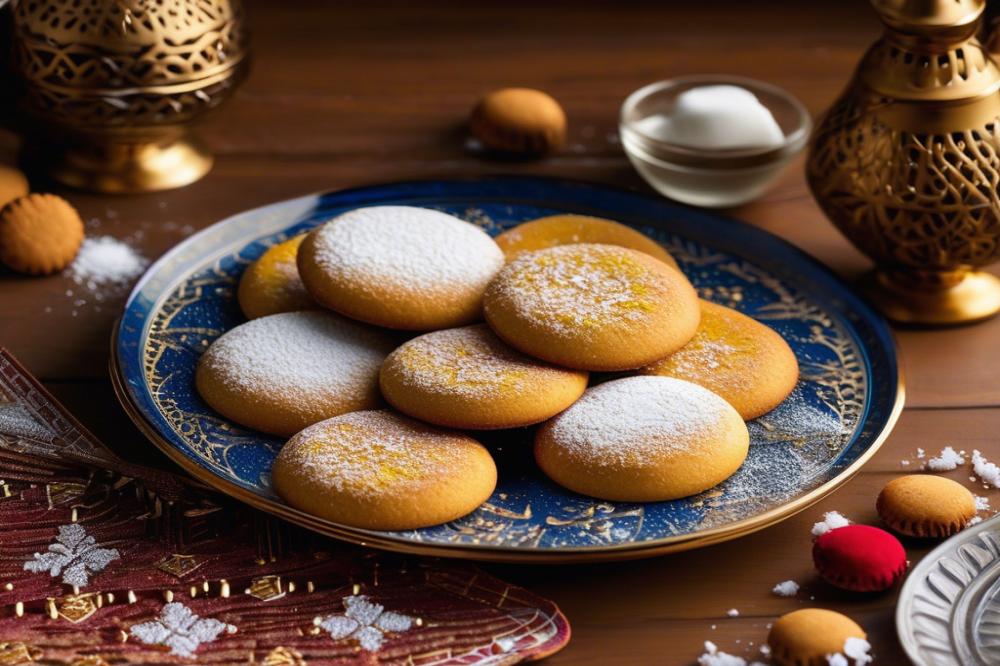Introduction
Egyptian-wheat-grain-dish”>Kahk is a beloved treat in Egypt, particularly during the festive holiday of Eid. These traditional cookies hold a special place in the hearts of many families. Often baked in celebration, they symbolize joy and togetherness. The act of preparing these cookies brings families closer as they engage in a cherished custom passed down through generations.
Historically, the origins of Egyptian-wheat-grain-dish”>Kahk can be traced back to ancient times. Originally, these cookies were made to honor the end of Ramadan and the arrival of Eid al-Fitr. Over the years, the recipe has evolved, but its significance remains unchanged. Ingredients like flour, powdered sugar, nuts, and a blend of spices create a rich flavor that captivates the taste buds. Each family may have its own unique twist on the recipe, making every batch special.
Baking these Eid Cookies is more than just a culinary endeavor. It reflects the essence of celebration in Egyptian culture. Spicing up the dough with aromas fills homes with warmth and excitement. Families often gather in the kitchen, sharing stories and laughter while measuring ingredients and rolling cookies. The end result showcases not only their baking skills but also their sense of togetherness. It is this communal spirit that truly makes Kahk a defining aspect of Eid celebrations.
What is Kahk
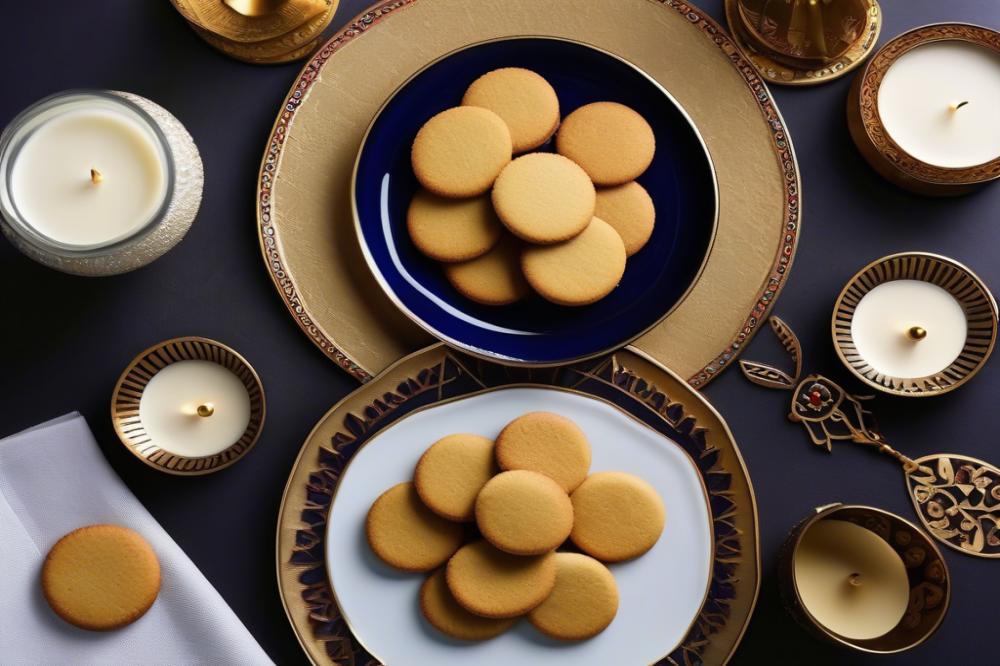
Kahk is a beloved Egyptian cookie that holds great significance during the holiday season. traditionally baked for Eid celebrations, these cookies are often filled with nuts or dusted with powdered sugar. Families pass down their recipes from generation to generation, making the act of baking a deeply personal experience.
The process of making this festive treat involves mixing flour with various spices. Common spices include cinnamon and nutmeg, which add warmth to the flavor. Some variations feature fillings made from walnuts or almonds. Others may use dates or a sweetened mixture of sesame seeds to create different tastes based on regional preferences.
Cultural importance surrounds Kahk as it symbolizes generosity and hospitality. Sharing these cookies with family and friends is a way to strengthen bonds during the holiday. Some families even host gatherings dedicated to baking together, turning the process into a joyful occasion full of laughter and storytelling.
Across Egypt, variations exist that reflect local traditions. In Upper Egypt, you might find different nuts blended into the dough, while coastal regions may prefer a lighter texture. Each region brings its unique flair to the recipe, ensuring no two batches taste the same. The variety makes Kahk a dynamic part of the holiday experience.
When preparing this traditional cookie, meticulous attention is given to the ingredients. High-quality flour is essential for the perfect aroma. The dough must be prepared with care to achieve the right consistency. After baking, a dusting of powdered sugar gives them a beautiful finish that adds to their festive appearance.
Ingredients List and Quantities
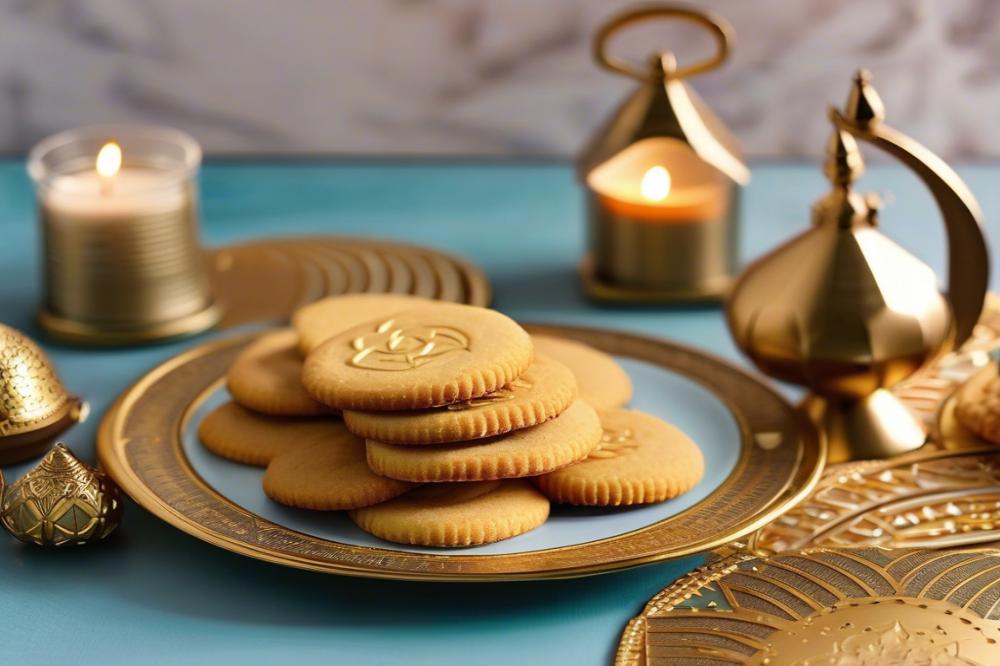
A traditional recipe for Egyptian holiday cookies requires some essential ingredients. Here is a detailed list to help you prepare:
- 4 cups all-purpose flour
- 1 cup unsalted butter, softened
- 1 cup powdered sugar
- 1/2 cup milk
- 2 teaspoons active dry yeast
- 1 teaspoon ground cardamom
- 1 teaspoon ground cinnamon
- 1/2 teaspoon salt
- 1 cup mixed nuts (almonds, walnuts, or pistachios)
- Additional powdered sugar for dusting
Nutritional Information
Understanding the nutritional value of each ingredient is important. This analysis helps to appreciate the balance of flavors and health benefits. Here’s a breakdown based on common dietary values:
- All-purpose flour: 455 calories, 1.2g fat, 95.4g carbohydrates, 13.2g protein per 100g
- Unsalted butter: 717 calories, 81g fat, 0.1g carbohydrates, 0.9g protein per 100g
- Powdered sugar: 389 calories, 0.1g fat, 100g carbohydrates, 0.1g protein per 100g
- Milk: 42 calories, 1g fat, 5g carbohydrates, 3.4g protein per 100g
- Active dry yeast: 325 calories, 4.2g fat, 50g carbohydrates, 34g protein per 100g
- Ground cardamom: 311 calories, 6.7g fat, 68g carbohydrates, 11g protein per 100g
- Ground cinnamon: 247 calories, 1.2g fat, 81g carbohydrates, 4g protein per 100g
- Salt: 0 calories, 0g fat, 0g carbohydrates, 0g protein
- Mixed nuts: 607 calories, 54g fat, 21g carbohydrates, 20g protein per 100g
The combination of flour, butter, and sugar creates a rich base. Adding spices enriches the flavor profile, making these cookies more festive. Nuts contribute not only taste but also valuable protein and healthy fats. When preparing your dish, consider these nutritional aspects. Each ingredient plays a role in achieving the ultimate baking experience.
Method of Preparation
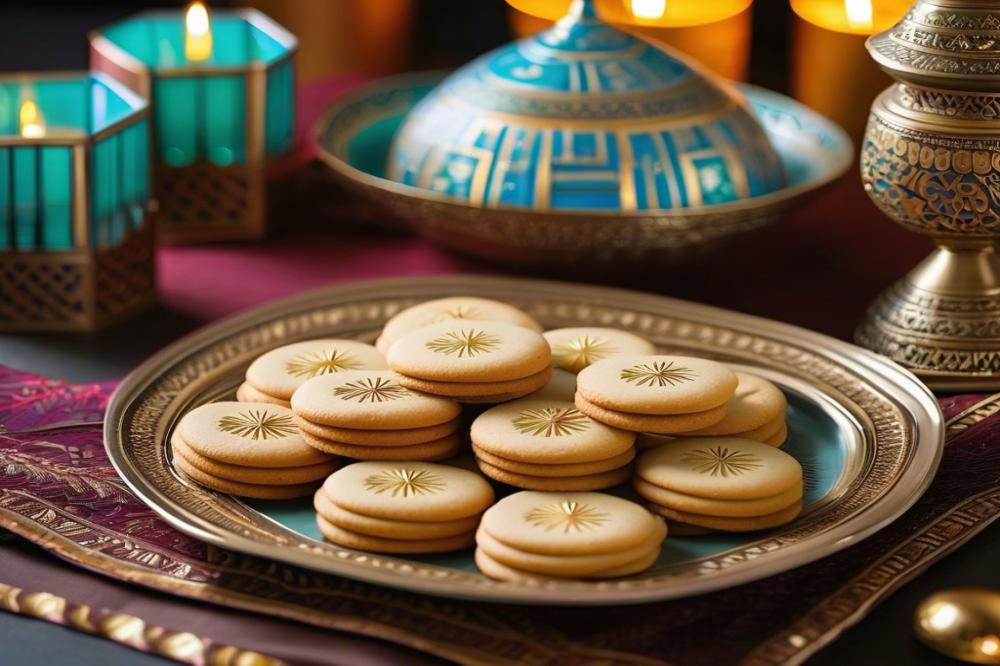
Mixing Dough
Start by gathering all of your ingredients. Use a large mixing bowl for this process. Combine flour, baking powder, and a selection of spices, such as nutmeg and cinnamon. This mixture gives the cookies their traditional flavor. Next, add melted butter and sugar into your bowl. Mix these thoroughly until the texture is crumbly. Gradually incorporate milk to form a smooth dough. Knead the dough gently; it should be soft yet not sticky.
Shaping Cookies
Once your dough is ready, break off small pieces of it. Roll these pieces into balls, approximately the size of a walnut. For a festive touch, create a small indentation in the center of each ball. This form can hold a variety of fillings such as ground nuts or even dates. Be creative; some may prefer plain cookies while others enjoy the surprise of a filling. Arrange the shaped cookies on a baking tray lined with parchment paper.
Baking Process
Preheat your oven to 350°F (about 180°C). After the oven reaches the desired temperature, place the baking tray inside. Bake cookies for about 15 to 20 minutes or until they are lightly golden brown. Keep a close watch to prevent overbaking, as this can alter their texture. The aroma of baking will fill your home, signaling that the holiday is near.
Cooling and Dusting with Powdered Sugar
Once baked, remove the cookies from the oven carefully. Allow them to cool for a few minutes on the tray. After that, transfer them to a wire rack for complete cooling. When they are completely cool, sprinkle powdered sugar generously on top. This final touch gives the cookies an elegant appearance. Presentation is key, especially during festive occasions. Enjoy the sweet aroma and share your tradition with family and friends.
Serving Suggestions and Variations
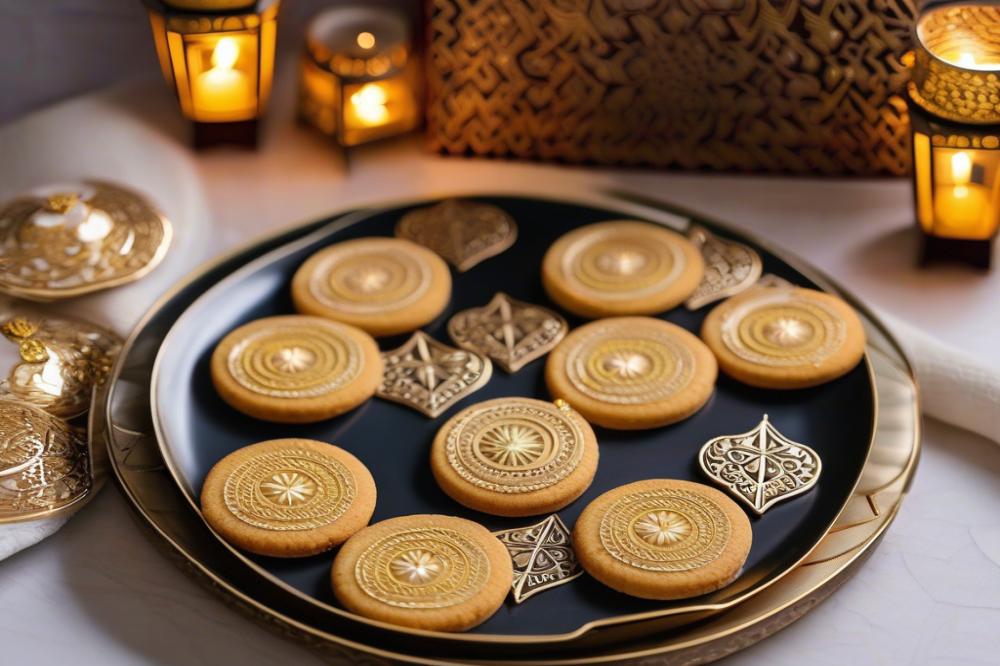
During holiday celebrations, serving Kahk can be both an art and a joy. Start by dusting these traditional cookies with a generous amount of powdered sugar. This not only adds sweetness but also enhances their visual appeal. Arrange them on a decorative platter, perhaps surrounded by colorful fruits or other pastries. This festive presentation makes them a centerpiece on any Eid table.
To elevate the flavor, consider adding unique fillings. Nuts are a popular option, providing a delightful crunch. Popular choices include walnuts, pistachios, or almonds. Chop the nuts finely and mix them with a bit of sugar and spices for a flavorful filling. Alternatively, some people enjoy using a sweet date paste as a filling. This addition can give a hearty, rich sweetness.
Different spices can also change the overall taste of the cookies. Adding a pinch of cinnamon or nutmeg to the dough brings warmth and complexity. Some families prefer to mix in vanilla extract for a touch of extra flavor. While traditional recipes may stick to basic ingredients, experimenting with spices can lead to delightful discoveries.
Serving suggestions vary across families. Some might opt for a simpler presentation with just a small bowl of powdered sugar for guests to sprinkle on top. Others may serve Kahk with aromatic tea or coffee, enhancing the experience. The combination of hot beverages with these baked treats is a classic one.
For those who enjoy adventure, try a savory version. Substitute some of the flour with whole wheat flour for an earthy flavor. Create a filling of spices and herbs instead of sweet options. This twist could surprise your guests and offer a unique experience to the traditional recipe.
Bringing together different styles and flavors can make your Eid celebration special. The key lies in creativity. Whether in presentation or in flavor, think about how to make the most of these traditional cookies.
Cultural Significance of Kahk During Eid
Egyptians have a long-standing tradition of making special cookies for Eid celebrations. This unique recipe is not just a culinary delight; it is deeply rooted in holiday customs. Families gather in kitchens filled with laughter, eager to partake in the baking process. The blend of flavors, including spices, flour, and nuts, fills the air, creating a joyful atmosphere.
During Eid, Kahk plays a prominent role in social interactions. Neighbors exchange trays of these delicious treats as a gesture of goodwill. Sharing is an essential part of the holiday spirit. Friends and relatives receive portions, allowing everyone to partake in these tasty delights together. The act of giving cookies enhances relationships and fosters a sense of community.
A traditional gathering often includes other festive foods, but these cookies hold a special place. As families decorate their creations with powdered sugar, storytelling and reminiscing abound. This practice is not merely about food; it symbolizes love, care, and the passage of cultural traditions. Every bite of the cookies reflects the essence of celebration and unity.
Beyond the baking and sharing, there is a deeper meaning. Each batch of cookies represents the effort and creativity invested into making them. Recipes are often passed down through generations, linking family members across time. This connection to heritage enriches the experience of Eid and inspires pride in Egyptian culture.
Furthermore, Kahk serves as a reminder of the joy that comes with the holiday. The act of preparing these treats becomes a cherished memory for many families. As they come together to enjoy their labor, the cookies become a symbol of their collective effort. The festive atmosphere of Eid is heightened by the act of creating and savoring these traditional delights.
The Heart of Eid Celebrations
The importance of these cookies in Egyptian culture cannot be overstated. For many, this delightful treat represents the joy of Eid celebrations. Families gather to bake together, sharing stories and laughter. Such moments strengthen bonds and create lasting memories. These cookies are not only a delicious dessert; they also symbolize the spirit of togetherness during the festive season.
Trying to make this traditional recipe can be a rewarding experience. Following the steps may seem simple, but it offers a chance to connect with history and family traditions. Savoring the outcome provides a sense of accomplishment. Sharing these cookies with friends and relatives is an invitation to participate in a cherished cultural practice.
As you embark on this culinary adventure, remember the joy it brings to those around you. Encourage friends to join in, turning the baking process into a fun group activity. The flavors of these cookies will undoubtedly enhance your Eid festivities. Dive into this opportunity and celebrate in the most delicious way possible!

